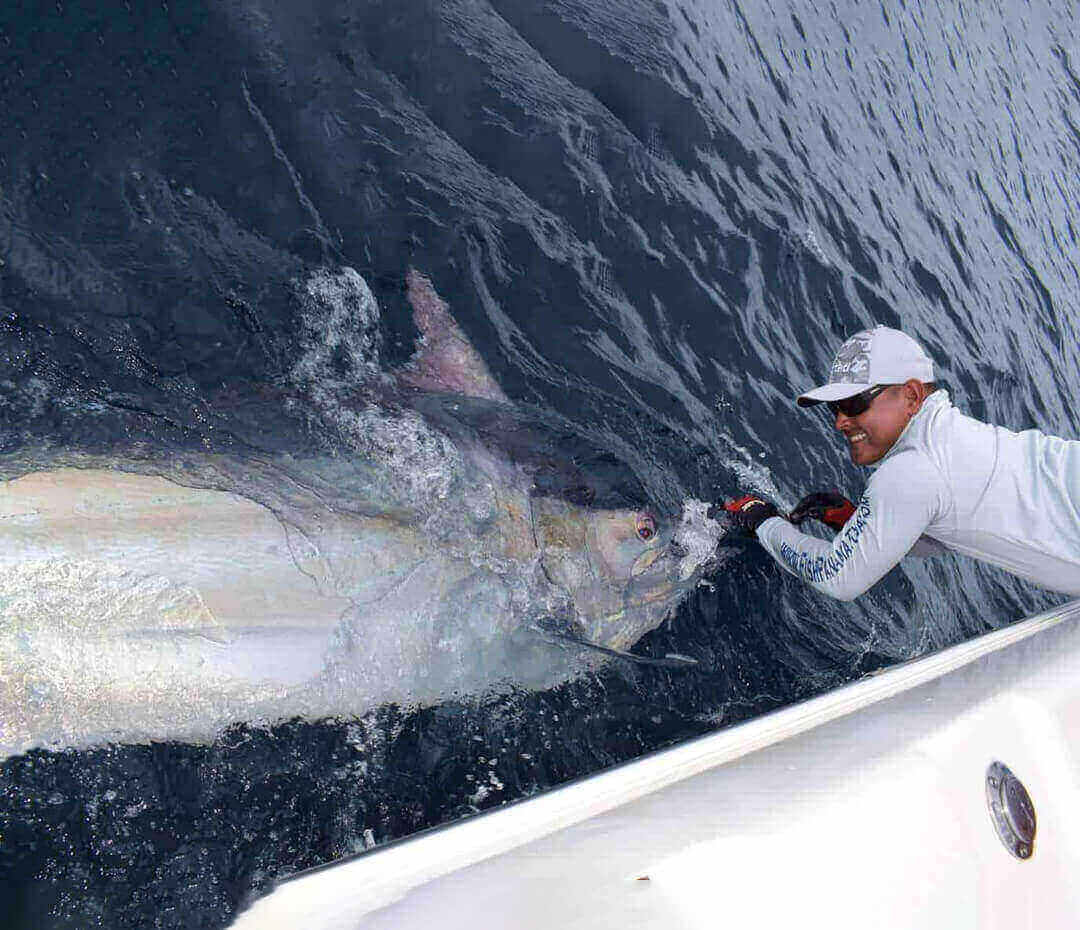Marlin
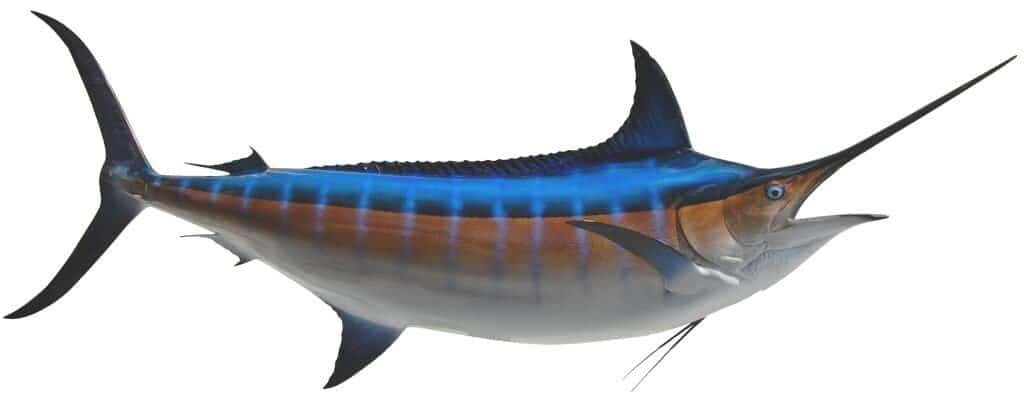
Marlin are a migratory pelagic species that prefer water temps in the 70s to low 80s, and have been known to travel hundreds of miles in the oceans currents in pursuit of food. The largest marlin are always female, which makes releasing them healthy and as quickly as possible even more important. It is believed that a 300 lb female will produce 30 million eggs while a grander can produce up to 100 million, so their survival is vital. Blue and black marlin can live as long as 25-28 years while striped marlin have a life span of about 10 years. All marlin in Central America are strictly catch and release for sport fishing boats, but sadly they are still targeted by commercial fishing boats.
The Marlin of Central America
There are four species of marlin found in the waters of Central America – blue, black, striped and white. Blue marlin can be found in the Pacific, Atlantic and Indian Oceans while black and striped marlin are only found in the Pacific and Indian Oceans. The rare white marlin is the smallest of them all and is found throughout the Atlantic and Caribbean. Striped marlin seem to tolerate cooler temperatures better than any of the other species. Black marlin in particular are known to be found around inshore reefs, pinnacles, and islands when feeding. Most marlin caught in Central America are in the 200-400 lb range while bigger ones grow to 500-600 lbs. Though rare, ‘granders’ have been caught in both Costa Rica and more-so in Panama along the famous Hannibal Bank.
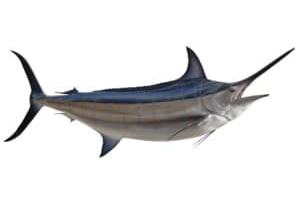
Black Marlin
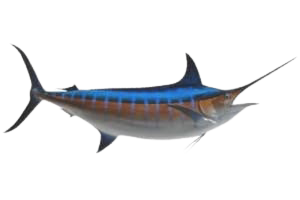
Blue Marlin

Striped Marlin

Black Marlin
Sometimes it can be hard to distinguish a blue marlin from a black marlin because their coloring is ver similar. Some captains and anglers believe the only way to be 100% sure is to test the pectoral fins as a blue marlin’s can lie flat along it’s side while a black marlin’s are fixed and don’t bed. Striped marlin are more easily identifiable thanks to their tall dorsal fin and more prominent stripes. Our friends at the IGFA created a nice graphic to help you properly identify your marlin on your next fishing vacation.
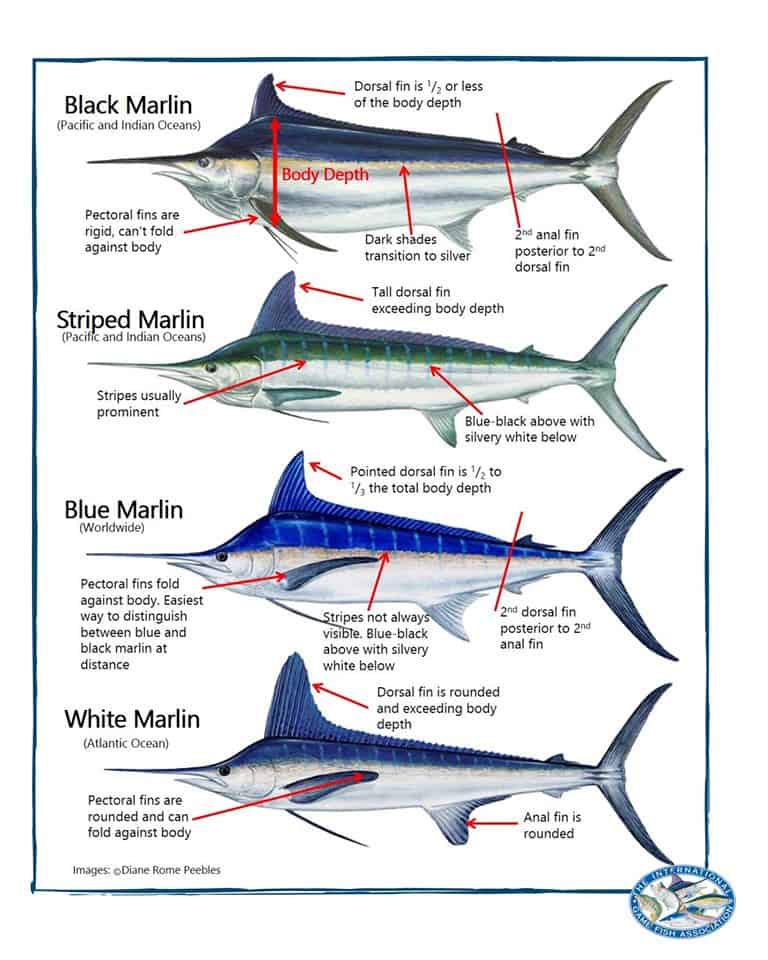
What Do Marlin Eat?
As one of the apex predators in the ocean, there isn’t much that isn’t on the menu for these beasts. Most commonly marlin will eat squid, herring, flying fish, sardines, dorado, mackerel, and small tuna. Marlin use their incredible speed to whack their pray with their elongated top jaw, or bill, and then feed once the prey is maimed or dead. Marlin have specially developed eyes that allow them to hunt for food in the low light conditions of the deep water they are often found in.
What is the World Record for Marlin?

Black Marlin – 1,560 lbs – Cabo Blanco, Peru (1953)
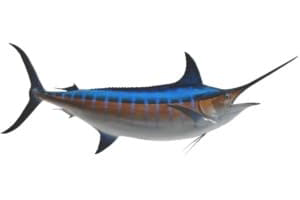
Blue Marlin (Atlantic) – 1,402 lbs 2 oz – Vitoria, Brazil (1992)

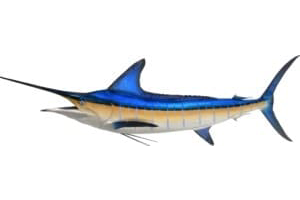
Striped Marlin – 494 lbs 0 oz – Tutukaka, New Zealand (1986)

White Marlin – 181 lbs 14 oz – Vitoria, Brazil (1979)
How to Catch Marlin in Central America
Catching a marlin isn’t an easy feat to accomplish, but marlin fishing in Central America may give you the best odds anywhere in the world thanks to a twelve month fishing season and a healthy population due to strict catch and release policies. There are three main ways we catch marlin in Central America:
Live Bait
One of the most tried & true methods for catching marlin is slow trolling with live bait. As with any fish, nothing can truly replicate the frantic motion, smell, and electrical impulses of a terrified live bait in the water. The bait of choice when marlin fishing is bonito, typically in the 2-5 lb range. Kept alive in tuna tubes, the bonito will be bridled with a circle hook and slowly trolled until the lady in the blue dress comes knocking. Small yellowfin tuna can also be used if available. Slow trolling with live bait is usually targeted at specific points as opposed to covering open ocean – such as fishing at the Hannibal Bank in Panama or marlin fishing at the FADs in Costa Rica.
Dead Bait
In sailfish meccas like Costa Rica and Guatemala, many days are spent trolling a spread of ballyhoo and teasers. While the main target may be sailfish, plenty of marlin are caught this way as well. Catching an angry marlin on 30# class tackle isn’t what a lot of captains want to do because it can lead to longer fight times, so often times boats will have a 50# reel rigged up with a frozen bonito or mackerel to use as a pitch bait in case there is time when you see it crash your spread.
Plastics
While not as productive as live bait or dead bait, trolling plastic squids is also successful at catching marlin. This is most often done in Panama when trying to cover large areas in search of marlin.
Fly Fishing
Yes, the marlin fishing in Central America is so good that we can fly fish for them as well. Similar to trolling ballyhoo, most of the time when fly fishing offshore the main target is sailfish but the set up, fly, and technique is the same when fly fishing for marlin. Due to higher number of fish and crews that are more experienced with fly fishing for billfish, if youre dream is to catch a malrin on a fly rod the best places to attempt that are Costa Rica and Guatemala.
Where & When is the Best Marlin Fishing in Central America?
We catch marlin 12 months a year in Central America, so any day you head offshore you have a realistic chance at coming across one. That said, based on weather patterns, sea conditions, and seasonal migrations there are some months that are better than others when your odds increase. If you have marlin on your bucket list, below are the best destinations and times to target them:
1) The FADs/Seamounts in Costa Rica. Best Months: May-Sept
2) The Hannibal Bank, Panama. Best Months: Dec-March / June-Aug
3) Los Sueños Resort, Costa Rica. Best Months: Dec-March / June – July
4) Quepos, Costa Rica. Best Months: Dec-March / June – July
5) Tropic Star Lodge, Panama. Best Months: Dec-Feb
6) Guatemala. Best Months: Nov-March



